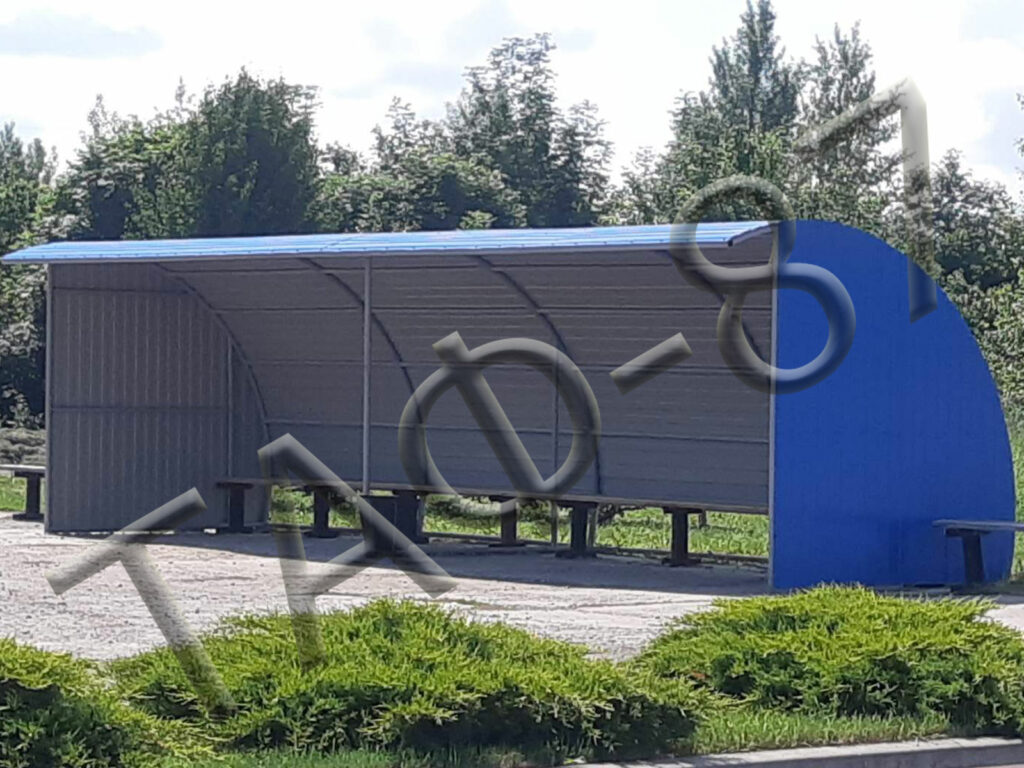Standard execution of SAF (Small Architectural Forms) in TAF-87: Features and advantages
What is SAF?
Small architectural forms are small structures intended for use in urban space. SAFs include benches, canopies, kiosks, public transport stops, trash cans, information boards and other infrastructure elements. Their main task is to improve the aesthetics of the city and increase convenience for residents and guests.
Small architectural forms (SAF) are important elements of the modern urban environment, helping to ensure the aesthetics, functionality and comfort of public spaces. The standard execution of SAFs is becoming an increasingly popular solution for the improvement of parks, squares, squares and other urban locations. In this article, we will consider the main characteristics, materials and advantages of the standard execution of SAFs.
Small architectural forms cover a variety of objects that are placed on streets, squares, parks and public spaces. They include:
- Pavilions and kiosks
- Benches, urns, gazebos
- Parking complexes
These elements are designed to ensure the comfort and functionality of public areas, as well as to serve as an aesthetic addition to the architectural ensemble of the city.
Small architectural forms (SAF) have become an integral part of modern urban space. They perform an important function in the urban environment, combining aesthetic appearance and practicality. The standard implementation of the SAF provides for the creation of structures that meet certain technical, architectural and functional requirements.
The main characteristics of the standard execution of SAFs
The standard implementation of SAFs involves the use of unified solutions that meet certain standards and requirements. The main characteristics of standard SAFs include:
- Strength and durability: High-quality materials are used for the manufacture of SAFs, which can withstand intensive use and the influence of external factors, such as moisture, temperature fluctuations and ultraviolet radiation.
- Ergonomics: SAF designs are designed with user comfort in mind. Benches, for example, have comfortable seats and backs, and information boards are located at a convenient height for viewing.
- Aesthetic design: Standard SAFs have an attractive appearance that harmoniously fits into the general concept of the urban environment. Style solutions can vary from classic to modern minimalism.
- Modularity: Many SAFs have a modular design that allows them to be easily modified or supplemented depending on the needs of the area.
- Universality of application: The standard execution of SAFs is suitable for different types of places — from city squares to private areas, commercial facilities or parks.
Materials for making SAFs
The following materials are used in the standard execution of SAFs:
- Metal: Stainless steel, aluminum, or galvanized steel are popular materials for SAF frames. They provide high strength and resistance to corrosion.
- Wood: Treated wood is often used to create benches, pergolas or decorative elements. It gives SAFs a natural look and complements the urban environment well.
- Concrete: Used to create more massive and stationary structures, such as flower beds or trash cans. Concrete elements have high strength and durability.
- Combined materials: Often, a combination of metal, wood and glass is used to make SAFs, which allows you to achieve both strength and an attractive design.
These materials are selected taking into account the climatic conditions and the specifics of the operation of the objects.
- Design solutions The standard execution provides for rational designs that are easy to mount and comply with safety standards. SAFs must be resistant to wind loads, atmospheric influences and vandalism.
- Design It is important that SAFs harmoniously fit into the general architectural style. The standard design often involves a minimalist design with an emphasis on functionality, but there are options with decorative elements.
- Functionality All SAFs are created taking into account their functional purpose. For example, benches should be comfortable to sit on, bins should be easy to maintain, and public transport stops should be weatherproof.
Advantages of standard execution of SAFs
- Economic efficiency: Standard solutions usually have a lower cost compared to individual projects due to unified manufacturing processes.
- Speed of installation: Thanks to the modular design and ready-made solutions, SAFs can be quickly installed on site without lengthy preparatory work.
- Environmental friendliness: The use of ecological materials and modern production technologies allows to reduce the impact on the environment.
- Ease of maintenance: Standard SAFs are easy to maintain and repair due to the availability of standardized spare parts and materials.
Conclusion
The standard execution of SAFs is an ideal solution for quick and effective improvement of the urban environment. Thanks to their technical characteristics, aesthetics and affordable price, such designs allow creating comfortable and attractive public spaces that will serve for the benefit of residents and guests of the city for a long time.





